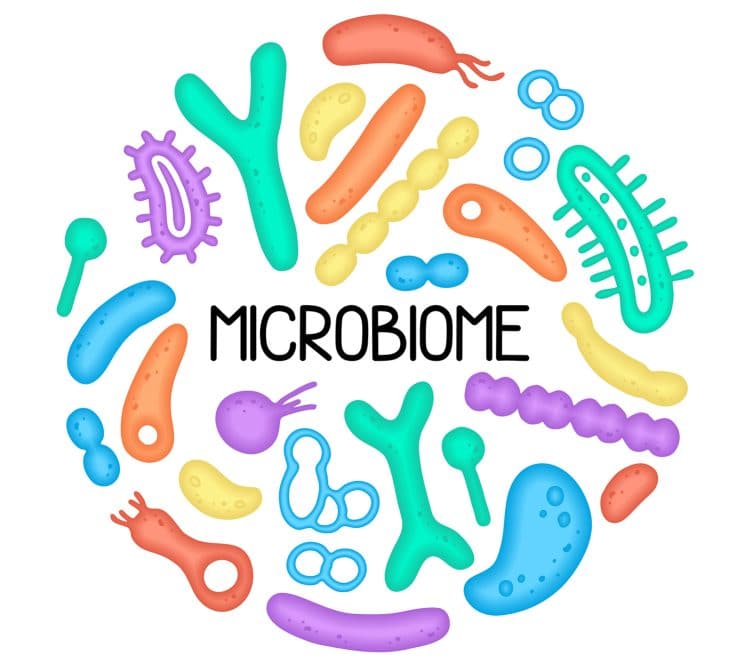Being overweight can drastically harm our health — now and in the long run. No wonder medical professionals and fitness experts emphasize being fit and active to stay healthy.
Doctors and healthcare professionals advise certain diets that can be combined with regular workouts to shed extra pounds. Many popular diets suggest calorie restriction, nutrient restriction (keto diet), and time-restricted eating plans or fasting.
This article discusses and gives a complete breakdown of the 36-hour fast, which has been gaining popularity due to its various benefits.
What is a 36-Hour Fast?

A 36-hour fast, also known as the Monk Fast, is a time-restricted diet where a person must not consume calories for 36 consecutive hours. This fast is usually done once a week.
The 36-hour fast is not a dry fast, meaning you can consume water to stay hydrated. Although it is ideal only to drink water, some dieticians suggest having unsweetened herbal tea, lemon water, or black coffee during a 36-hour fast. You can also add electrolytes to the water since this fast is strenuous and may cause electrolyte imbalance.
Level Up Your Fitness: Join our 💪 strong community in Fitness Volt Newsletter. Get daily inspiration, expert-backed workouts, nutrition tips, the latest in strength sports, and the support you need to reach your goals. Subscribe for free!
A basic example of a 36-hour fast is when a person starts the fast at 7 pm after dinner and fasts for the entire night and the entire following day and night, eventually breaking the fast at 7 am the next morning. The timings are adjustable based on your convenience, but the general pattern remains the same.
What is the Science Behind a 36-Hour Fast?
To better understand how a 36-hour fast works, one must understand how our body reacts to eating food and staying hungry for a prolonged period.
When we consume calories, they are digested by the body and converted to energy, which acts as fuel for our body. Generally, the energy derived from the digested food is synthesized in the form of glycogen, which is transferred to different cells and organs of the body to maintain the state of homeostasis.
Often, the amount of glycogen in our body is much more than we require. It leads to a glycogen surplus, which is stored as fat. This phenomenon leads to weight gain and obesity.
Now, when we stay hungry for a prolonged duration, our body functions the exact opposite way. A calorie shortfall creates a glycogen deficit. It forces the body to look for other sources of energy since the body needs energy (fuel) to maintain homeostasis.
The body starts breaking down stored fat to create energy for the cells and body organs to function normally. This phenomenon leads to fat breakdown and eventual weight loss.
A 36-hour fast is a great way to create a calorie deficit, forcing the body to tap into the stored fat resources and use them for energy and weight loss. Besides fat loss, here are a few ways the 36-hour fast works:
Modifications in Gut Microbiome
A healthy gut is essential for optimal body functioning. Gut bacteria is one of the most critical factors affecting our gut health. This bacteria helps break down food, produce essential vitamins, and fight diseases.
The Monk Fast fast works in two ways to boost your gut health and support the microbiome. Firstly, while performing a 36-hour fast, you are not consuming any calories for a prolonged period. It gives the gut bacteria some much-needed rest, which leads to their multiplication. Secondly, while fasting, the bacteria in our gut are starving. At this time, the weak and damaged bacteria die quickly and are replaced by newer, healthier bacteria. [1]
Alteration in Circadian Biology
Our body runs on a circadian clock, governed mainly by daylight hours. Studies suggest that consuming food during late hours or irregular times significantly affects our circadian rhythm, which leads to higher insulin secretion, which can lead to weight gain. An irregular circadian rhythm may also lead to poor sleep patterns and abnormal metabolism. [2]
On a 36-hour fast, you consume food during the daytime and fast for an entire day and a half. It can help reset the body’s inner circadian clock and promote better sleep patterns, hormone secretion, and overall metabolism.
Changing Lifestyle
Your overall health inadvertently reflects your quality of life. A poor lifestyle, which includes unhealthy food consumption, lack of exercise, improper sleeping patterns, consumption of alcohol, etc., will eventually lead to poor overall health.
Although these changes are not directly related to 36-hour fasting, it is a step in the right direction, and a weekly 36-hour fast will help us quell these bad habits from our lives and direct us towards a healthy lifestyle.
Top 8 Benefits of a 36-Hour Fast
Fasting on its own has been touted as one of the most revolutionary new-age diet choices by healthcare professionals and fitness experts. This section will take a closer look at the evidence-based benefits of the Monk Fast.
1. Helps Lose Weight
One of the primary reasons people opt for a 36-hour fast is related to its weight loss benefits. Studies suggest intermittent fasting can help people struggling with obesity. Some studies also suggest intermittent fasting can encourage the body to break down fat to produce energy, leading to weight loss. [3]
2. Regulates Hormones
Performing a 36-hour fast once a week can help reset our body’s circadian clock. It can be beneficial for people who are suffering from hormonal imbalances. Eating untimely often spikes our insulin levels, leading to increased blood sugar levels, poor sleeping patterns, and causing severe health risks related to sleep apnea.
Fasting for 36 hours once a week provides our body and endocrine system a much-needed rest where they do not have to deal with insulin spikes and elevated blood sugar levels. It realigns our whole system so that it can perform optimally. [4]
3. Promotes Ketosis
Ketosis is when our body does not have enough carbohydrates to convert to glycogen and produce energy to maintain homeostasis. It is when the body is forced to burn stored fat, leading to weight loss and fat burn.
A 36-hour fast is one of the best ways to achieve ketosis, as sometimes, during shorter fasts, the body can use up the stored glycogen in the liver to maintain ketosis. But in the case of a 36-hour fast, your body has to go into ketosis as the fasting duration is too long for it to survive on the glycogen stored in the liver. [5]
4. Slows Down Ageing
Some preliminary studies suggest fasting can slow aging and increase our lifespan. Calorie restriction may positively affect our DNA health, which is directly responsible for cellular aging. Also, some studies suggest that fasting regularly helps in reducing inflammation.
Level Up Your Fitness: Join our 💪 strong community in Fitness Volt Newsletter. Get daily inspiration, expert-backed workouts, nutrition tips, the latest in strength sports, and the support you need to reach your goals. Subscribe for free!
Scientists suggest that inflammation is the root cause of several chronic diseases. Fasting can be beneficial in slowing down our aging process by reducing inflammation and promoting better DNA health. [6]
5. Reduces Blood Sugar Levels
Fasting for a prolonged duration can lower blood sugar or glucose levels. During a 36-hour fast, blood sugar levels drop significantly and remain the same due to minimal insulin spikes. Also, fasting regularly helps the body develop better insulin resistance, lowering blood sugar levels and protecting us from type 2 diabetes. [7]
6. Boosts Cardiovascular Health
Although fasting is not directly related to heart health, it is essential to point out that fasting for 36 hours a week can benefit the health markers that determine a person’s heart health.
These include blood sugar levels, blood pressure, and blood triglycerides. Also, fasting has been proven to reduce LDL cholesterol levels, which are directly responsible for coronary artery disease and stroke, and increase HDL cholesterol levels, which is good for heart health. Fasting may also reduce the body’s overall inflammation, lowering the risk of heart disease in the long run. [8]
7. Reduces the Risk of Metabolic Diseases
Our body’s metabolism plays a huge part in the proper functioning of our body. An unhealthy metabolism can cause diseases like coronary artery disease, type 2 diabetes, etc.
Studies suggest fasting for prolonged durations can help boost our metabolic health and benefit health-related biomarkers, protecting us from heart disease, diabetes, etc. Also, having a slow or irregular metabolism is the root cause of weight gain and obesity, which is the prime reason for other health-related disorders. [9]
8. Helps Fight Cancer
Some preliminary animal studies suggest that fasting or following a fasting-mimicking diet can help prevent cancer. These studies have found that following a fasting-mimicking diet can help boost tumor immunogenicity and improve tumor-infiltrating lymphocytes.
Additionally, fasting-mimicking diets have effectively sensitized tumors to chemotherapy and promoted the enrichment of common lymphoid progenitor cells. [10]
Downsides of a 36-Hour Fast
For all the advantages and health benefits related to 36-hour fasts, there are certain downsides associated with it. Let’s look at all the downsides of the Monk Fast.
1. Can be challenging for Some People
A 36-hour fast is a relatively advanced form of intermittent fasting and is not very accessible for people who are new to fasting. Newbies should start with a daily 16-hour fast. They can gradually increase the fasting hours until they can efficiently perform the 36-hour fast.
2. Can Mess Up Your Social Life
Fasting for 36 hours a week can mess up a person’s social life since it can interfere with social gatherings, office parties, and functions where it is essential to hang out and eat with friends. However, this varies from person to person and depends more on an individual’s lifestyle. The most common solution to this problem is that people who wish to perform a 36-hour fast must choose the right day to fast when they do not have any social commitments.
3. Not Suitable for Underlying Medical Conditions
People suffering from metabolic diseases like cardiovascular problems, type 2 diabetes, etc., may find performing a 36-hour fast somewhat impossible as it can be stressful and might aggravate their health conditions.
Similarly, pregnant women must avoid the 36-hour fast or any such fasting diet, as they require the best nutrition and care during their pregnancy. Any fasting diet may cause undue stress, leading to pregnancy-related complications.
4. May Lead to Overeating After Fasting Periods
One of the most common mistakes that people who fast for long durations regularly make is consuming a lot of food as soon as they break the fast. It is a psychological dilemma where people think it is okay to eat a lot of food since they have fasted for a prolonged period.
5. May Interfere With Your Athletic Performance
Fasting for a prolonged duration may affect athletic performance. While fasting, our body enters an energy preservation mode, so it is almost impossible to perform athletic activities. Also, fasting for prolonged periods can cause muscle loss.
6. Sometimes Affects Fertility And Reproductive Health
In some cases, fasting for prolonged periods can negatively affect a person’s fertility and reproductive health. Fasting can cause a decrease in androgens among males, which can further reduce metabolic health and libido. [11]
How Can I Start Practicing The 36-Hour Fast?
If you have decided to follow the 36-hour fasting regime, here are some tips that you might find helpful:
1. Set An Appropriate Fasting Time
To increase your odds of completing a 36-hour fast, you must pick the right day for it when you do not have any prior commitments.
2. Stay Hydrated
You must ensure that you stay hydrated while fasting. Water is one of the essential elements that the body requires, and a lack of water can lead to severe dehydration and further complications. You can calculate your ideal daily water intake by using the water intake calculator.
3. Take Some Electrolytes
It is advisable to consume electrolytes with water while fasting as the body is deprived of them, which can cause weakness and damage the cells.
4. Plan Pre and Post-Fast Meals
Planning your pre and post-fast meals is the best way to ensure your fasting period goes smoothly and prevents you from overeating after completing the fast.
5. Start Slowly
It is one of the most critical points for people new to intermittent fasting. Since a 36-hour fast is a relatively advanced form of intermittent fasting, beginners might struggle to complete it. You can start with simpler forms of intermittent fasting before opting for a 36-hour rigorous fast.
Is a 36-Hour Fast Worth It?
The benefits of the Monk Fast vary from person to person and have certain obvious drawbacks. However, for those dealing with obesity and at risk of developing several metabolic diseases, the 36-hour fast offers an attractive alternative to conventional weight loss techniques.
Frequently Asked Questions
Is a Monk Fast and a 36-hour fast the same thing?
Yes, the Monk Fast and the 36-hour fast are the same.
What is the best time of the week to fast for 36 hours?
The ideal fasting time will vary from person to person, as some people might find it easier to fast on weekends, whereas others might prefer weekdays for a 36-hour fast.
Can I take my medicine and other supplements during the fasting hours?
Most medicines and supplements have zero calories and won’t break your fast. Still, some medications and supplements are fat soluble, and taking them on an empty stomach can cause complications or neutralize their effect.
Is a 36-hour fast different from intermittent fasting?
A 36-hour fast is an advanced variation of intermittent fasting; they are variations of the same principle.
Can everyone do a 36-hour fast?
No, not everyone should perform a 36-hour fast. Since a 36-hour fast is a reasonably advanced fasting method, beginners, people with underlying health conditions, or pregnant women should not try 36-hour fasting.
How much fat could I lose through a 36-hour water fast once a week?
It is tough to predict the amount of fat a person can lose through a 36-hour fast, as fat loss depends on many different parameters, including individual body metabolism, which differs from person to person.
Can I still exercise during a 36-hour fast?
Exercising during a 36-hour fast will depend on your fitness level. However, you should avoid strenuous exercise during a 36-hour fast.
Learn more about fasting
- Anabolic Fasting: Learn About Building Muscle and Losing Fat Simultaneously
- I’m a Fasting Expert: This is the One Mistake That Destroys Fat Loss During IF
- Inflammation Calculator & Personalized Action Plan
- Dry Fasting Calculator: Estimate Your Weight Loss & Safety Risks
- Intermittent Fasting Weight Loss Calculator: Discover How Much You Can Lose
- Intermittent Fasting vs. Small Meals: Which is Best for Weight Loss?
- 8 Intermittent Fasting Mistakes Beginners Make (And How to Avoid Them)
- I Stuck to an 8-Hour Eating Window for 3 Weeks — Here’s What Happened
- Fat Fasting for Rapid Weight Loss: A Guide to Boosting Ketones and Transforming Your Body
- I Stopped Eating After 3 PM for a Month—And It Changed My Life
Final Thoughts
A 36-hour fast is ideal for people who want to add fasting to their routine but do not want to spend multiple days a week fasting.
Intermittent fasting has its benefits and helps in weight loss. However, the Monk Fast might not be everyone. So give it a try and see how you feel. If 36 hours of intermittent fasting sounds good, you should go for it!
References
- Su, Junhong, et al. “Remodeling of the Gut Microbiome During Ramadan-associated Intermittent Fasting.” PubMed Central (PMC), 12 Apr. 2021, www.ncbi.nlm.nih.gov/pmc/articles/PMC8106760.
- “From the Cover: Adverse Metabolic and Cardiovascular Consequences of Circadian Misalignment.” From the Cover: Adverse Metabolic and Cardiovascular Consequences of Circadian Misalignment, www.ncbi.nlm.nih.gov/pmc/articles/PMC2657421. Accessed 1 Nov. 2022.
- “Intermittent Fasting and Weight Loss: Systematic Review – PubMed.” Intermittent Fasting and Weight Loss: Systematic Review – PubMed, pubmed.ncbi.nlm.nih.gov/32060194. Accessed 1 Nov. 2022.
- Kim, Bo Hye, et al. “Effects of Intermittent Fasting on the Circulating Levels and Circadian Rhythms of Hormones.” PubMed Central (PMC), 27 Aug. 2021, www.ncbi.nlm.nih.gov/pmc/articles/PMC8419605.
- “Flipping the Metabolic Switch: Understanding and Applying Health Benefits of Fasting.” Flipping the Metabolic Switch: Understanding and Applying Health Benefits of Fasting, www.ncbi.nlm.nih.gov/pmc/articles/PMC5783752. Accessed 1 Nov. 2022.
- “Mechanisms of Lifespan Regulation by Calorie Restriction and Intermittent Fasting in Model Organisms.” Mechanisms of Lifespan Regulation by Calorie Restriction and Intermittent Fasting in Model Organisms, www.ncbi.nlm.nih.gov/pmc/articles/PMC7230387. Accessed 1 Nov. 2022.
- “The Effects of Intermittent Fasting on Glycemic Control and Body Composition in Adults With Obesity and Type 2 Diabetes: A Systematic Review – PubMed.” The Effects of Intermittent Fasting on Glycemic Control and Body Composition in Adults With Obesity and Type 2 Diabetes: A Systematic Review – PubMed, pubmed.ncbi.nlm.nih.gov/32780629. Accessed 1 Nov. 2022.
- “Intermittent Fasting in Cardiovascular Disorders—An Overview.” Intermittent Fasting in Cardiovascular Disorders—An Overview, www.ncbi.nlm.nih.gov/pmc/articles/PMC6471315. Accessed 1 Nov. 2022.
- “Randomized Cross-over Trial of Short-term Water-only Fasting: Metabolic and Cardiovascular Consequences – PubMed.” Randomized Cross-over Trial of Short-term Water-only Fasting: Metabolic and Cardiovascular Consequences – PubMed, pubmed.ncbi.nlm.nih.gov/23220077. Accessed 1 Nov. 2022.
- “Fasting-Mimicking Diet Reduces HO-1 to Promote T Cell-Mediated Tumor Cytotoxicity.” Fasting-Mimicking Diet Reduces HO-1 to Promote T Cell-Mediated Tumor Cytotoxicity, www.cell.com/cancer-cell/fulltext/S1535-6108(16)30265-3. Accessed 1 Nov. 2022.
- “Effect of Intermittent Fasting on Reproductive Hormone Levels in Females and Males: A Review of Human Trials – PubMed.” Effect of Intermittent Fasting on Reproductive Hormone Levels in Females and Males: A Review of Human Trials – PubMed, pubmed.ncbi.nlm.nih.gov/35684143. Accessed 1 Nov. 2022.













